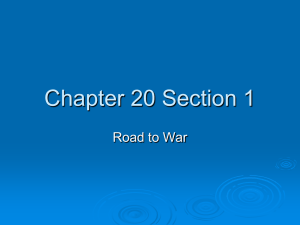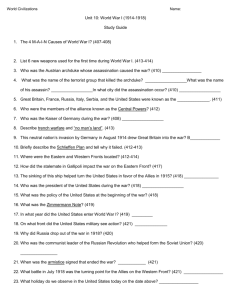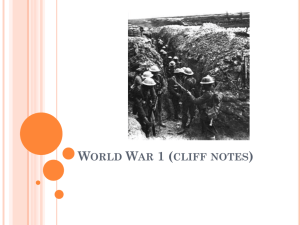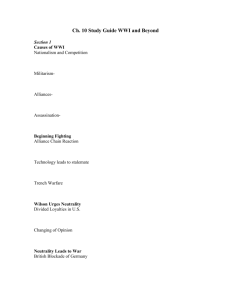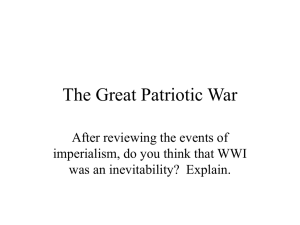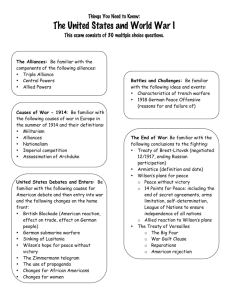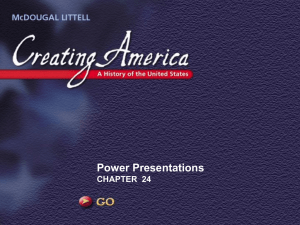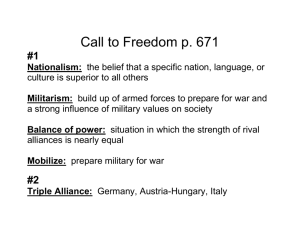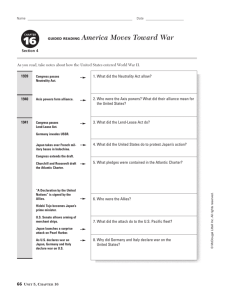The United States In World War I
advertisement
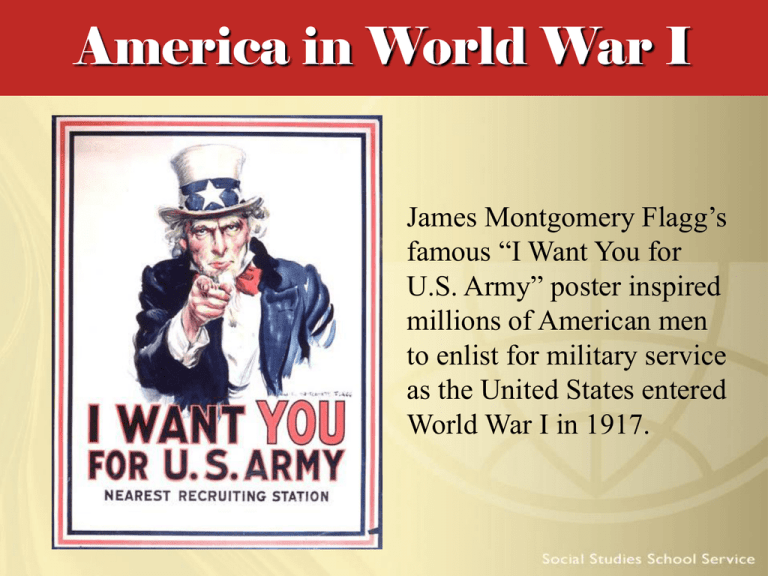
America in World War I James Montgomery Flagg’s famous “I Want You for U.S. Army” poster inspired millions of American men to enlist for military service as the United States entered World War I in 1917. President Wilson in France on his way to negotiate the Versailles Treaty Essential Questions • Why was it difficult for the U.S. to follow a policy of neutrality during the early years of World War I? • What developments led the U.S. to enter the war? • How did the U.S. make the transition from a peacetime to a wartime society? • Why did the government find it necessary to restrict civil liberties during wartime? • Why did the Senate ultimately fail to ratify the Versailles Treaty? • What implications did the end of World War I have in regard to the rise of totalitarian governments during the 1930s and 1940s? Woodrow Wilson • • • • • Born in Virginia in 1856 President of Princeton University New Jersey governor Elected president in 1912 Progressive administration, “The New Freedom” • Reelected in 1916 War Comes to Europe: Fundamental Causes • • • • • • Archduke Franz Ferdinand and his wife are greeted in Sarajevo shortly before both were shot Nationalism Militarism Imperialism Entangling Alliances Diplomacy Assassination of Archduke Ferdinand World War I Alliances Triple Entente Triple Alliance (Allies) (Central Powers) • Britain • France • Russia • Germany • Austria-Hungary • Ottoman Empire (Turkey) Discussion Questions • Why did the major powers in Europe enter into such complicated alliances? What were the consequences of doing so? • Which of the fundamental causes of World War I do you think was the most important in causing the war? U.S. Neutrality • U.S. economic interests tied to the Allies • Similarities in American and British culture • U.S. immigrants from eastern Europe • Irish Americans supported Germany • Wilson’s philosophy favored assisting the Allies’ cause International Law and World War • International Law: governs relations between nation-states • Developing technology and war strategies made violations more common • Belligerents’ violations of international law directly affected American citizens and the U.S. government German U-Boats German U-Boats, such as the SM U 15 pictured above, terrorized transport ships and passenger liners during World War I • Used to counterbalance strength of British navy • British ships attempted to reduce threat by flying U.S. flags • Germans responded with “unrestricted submarine warfare” • U.S. saw this as a violation of American neutrality

